One day in 1997, after Leicester City decided they had to leave Filbert Street, Chief Executive Barrie Pierpoint was standing in a field in Aylestone, forming pictures in his mind. Above him ran Soar Valley Way, the road that leads from Glen Parva out towards the motorway. On the far side of the field, the River Soar was rolling gently along, separated from the canal by just a tiny slither of land.
'It's the perfect place for the new stadium', he thought. 'Easy access to the M1, not too far from the city centre, a beautiful spot'. It was one of several potential sites the club had identified after discussions with Leicester City Council.
As he stood contemplating the club's future, Barrie was probably unaware of it, but on that very spot, 44 years earlier, one of the darkest episodes in the post-war history of Leicester was unfolding - and it was connected to his own family history.
Around that time, Barrie's father changed the spelling of their name. It was originally 'Pierrepoint', but he decided to shorten it to 'Pierpoint', attempting to conceal the connection to a certain Albert Pierrepoint, a distant relative.
Who was Albert Pierrepoint? He was the UK's most famous hangman, who carried out the last execution at Leicester Prison in 1953, after Irishman Joseph Reynolds was sentenced to death for murdering 12 year-old Janet Warner.
This is what happened:
May 22nd 1953
The football season had just finished, and despite Arthur Rowley topping the goalscoring charts, Leicester City had yet again failed to achieve their primary objective - promotion back to Division One. It was in the following days that Jospeh Reynolds began his macabre daily ritual.
He was employed at Leicester Gas Works, just south of Filbert Street, and after work he would walk along the canal footpath to Aylestone, looking for a likely candidate. He spotted Dennis Goodger, who was on his way home to Gwencole Crescent, off Narborough Road, from the building job he was working on near the County Arms in Blaby.
The next day, and for several days after that, Reynolds returned to the same spot along the canal, and each time he saw the same man. Finally, on May 22nd, he was ready. When Goodger walked past that day, he would put his plan into action.
But Goodger didn't turn up. Fortunately for him, his job in Blaby had finished the day before. The plan was stymied.
Tragically for Janet Warner, Reynolds quickly decided to find an alternative victim. She was strangled, and her body dumped near the canal in Glen Parva.
Reynolds was soon arrested, and sentenced to death five months later. On November 17th, a scene that had been observed many times over the previous 100 years played out for the last time - a large crowd gathering outside the walls of Leicester Prison, awaiting confirmation of the execution.
Among them was none other than Dennis Goodger, who spoke to a reporter from the Leicester Evening Mail about his narrow escape. 'He was there every day at the same place. And he always asked me the time. Every day I gave the same answer: 'It's just turned five o'clock'. He used to give me a strange out-of-this-world look and I became more and more suspicious'.
At 9.10 a.m. the chief warder opened the main gates of the prison and pinned up the notice stating that the sentence of death had been carried out. 'Pierrepoint', the Mail said, 'was the executioner'. That's how people referred to him. He didn't need a first name - everyone knew who he was.
It had been nine years since the previous execution in the city, a double hanging in 1944. Albert Pierrepoint was there that day too, and he might have been busier in the intervening years had it not been for the efforts of one man. That was Dr. Arthur Colahan, an Irishman from Galway who had worked in Leicester since the 1920s. He was often called to murder trials to offer his expert opinion on the sanity or otherwise of the accused. On one particular occasion, that evidence proved crucial.
Saturday January 24th 1948
It was a huge day for Leicester City - drawn at home against Sheffield Wednesday in the Fourth Round of the FA Cup. At 2 p.m., supporters heading to Filbert Street from the city centre may not have paid too much attention to a taxi picking up two passengers at the Grand Hotel. Josef Zawadaski and his former partner Joan Mills told the driver to take them to Kitchener Road near Spinney Hill Park.
At Filbert Street, far more than the usual number of police were on duty. They had been struggling to keep order for several hours as huge numbers gathered, excited by the prospect of a Cup run, and perhaps Leicester's first visit to Wembley. Half an hour before kick-off the gates were closed, leaving thousands outside. One entrance at the Spion Kop end was then smashed and fans surged into the ground without paying. Police somehow managed to form a barrier and prevent even more getting in.
This was how Filbert Street had looked at 12.30:
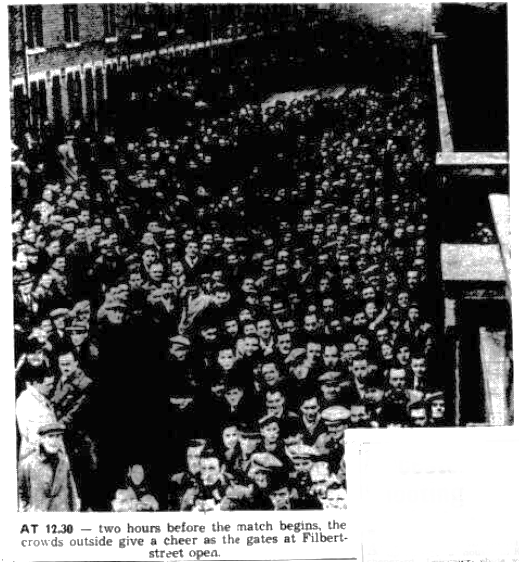
Calls may have been made to Charles Street police HQ, asking for reinforcements, but just at that moment it became apparent that a drama of a different nature was unfolding across town in Kitchener Road. When that taxi arrived, Zawadski suddenly produced a gun. He shot Mills, killing her instantly, then tried to shoot himself in the head, but failed.
At Filbert Street, Leicester beat Sheffield Wednesday 2-1 with two famous goals - Walter Harrison after a '40 yard dribble' and Jimmy Haines from 25 yards. In the local papers on Monday two stories dominated - the fall-out from the shooting on Kitchener Road, and the draw for the last 16 of the FA Cup. Leicester were given a tie away to fellow Second Division side Tottenham Hotspur.
By the time Zawadski's case came to trial on March 16th, Leicester were out of the Cup. They would have to wait another year for their first ever visit to Wembley. In court, Dr. Arthur Colahan testified that at the time of the shooting, he believed that Zawadski was suffering from 'manic depressive anxiety'. His evidence was crucial - without it, Zawadski would have been given the death penalty, and Pierrepoint would have been back in town.
In fact, this was not the first time Dr. Colahan had played such a role. Before that double hanging in 1944 mentioned above, he had testified on behalf of one of the defendants, William Cowie, who was suffering, he said, from 'depressive insanity'. But on this occasion his testimony couldn't prevent a death sentence being handed down, and Pierrepoint was called for (at that time, as an assistant, with his uncle Thomas in charge shortly before he retired).
Back in 1931 Dr. Colahan had testified on behalf of Annie Robson, a Leicester nurse charged with the murder of a patient. He said he had interviewed her in prison and declared her 'insane'. The jury found her guilty, but due to her insanity, she escaped the death penalty.
So that's three occasions over a period of 17 years when he tried to save someone from the noose. It's tempting to think that, above any considerations about a defendant's state of mind, Dr. Colahan was motivated simply by an abhorrence of the death penalty. Maybe he simply wanted to save lives.
When you look at his life story, it's easy to see why that would have meant so much to him.
August 17th 1912
Long before Arthur Colahan left Ireland and came to Leicester to begin his medical practice, his brother Roly lost his life in a tragic accident on Lough Corrib in County Galway.
Roly and his friend Oswald Fisher went out in a sailing boat in windy conditions, and the vessel was quickly in trouble. A strong gust blew the boat over on its side, and the two stripped naked and dived into the water, several hundred yards from the shore.
The heartbreaking story of what happened next appeared in the Galway Express:
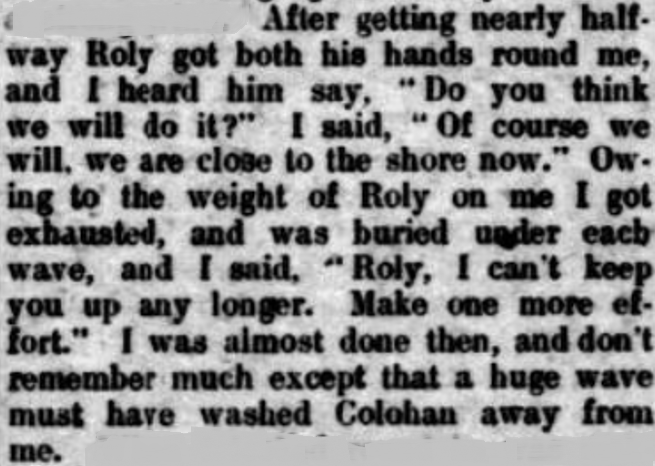
That's how Arthur Colahan lost his brother.
Several years later, after he moved to Leicester, he wrote a song dedicated to Roly's memory, the lyrics full of allusions to the tragedy on Lough Corrib. He called the song Galway Bay. It became a massive hit in Ireland, the UK and the USA.
This is the Leicester Evening Mail from May 1948:
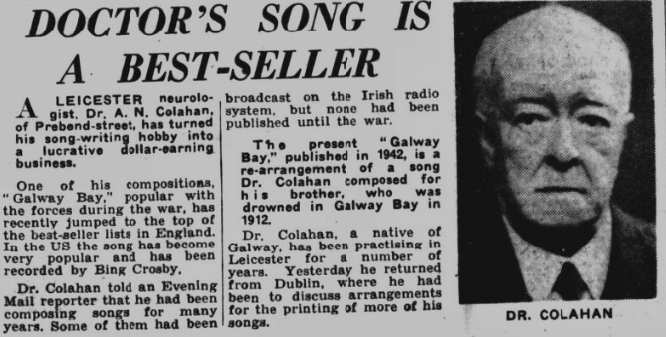
Arthur Colahan died in 1952.
Now another great Irish songwriter has died, and his song, which tips its hat to the boys of the NYPD choir and to Colahan's song, is everywhere (even more so than usual).
Colahan isn't short of recognition either. This is his plaque in Prebend Street:


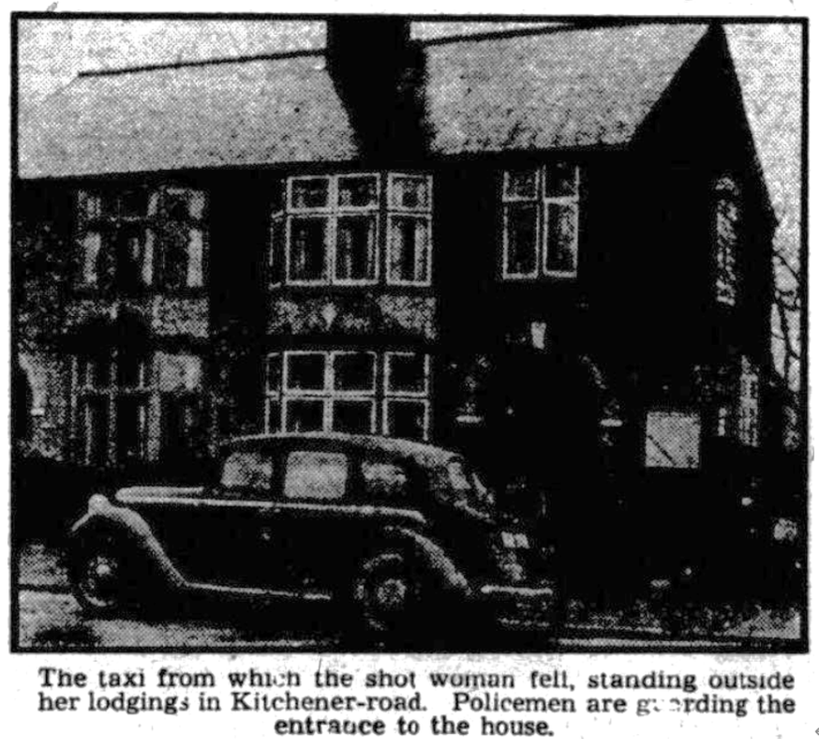
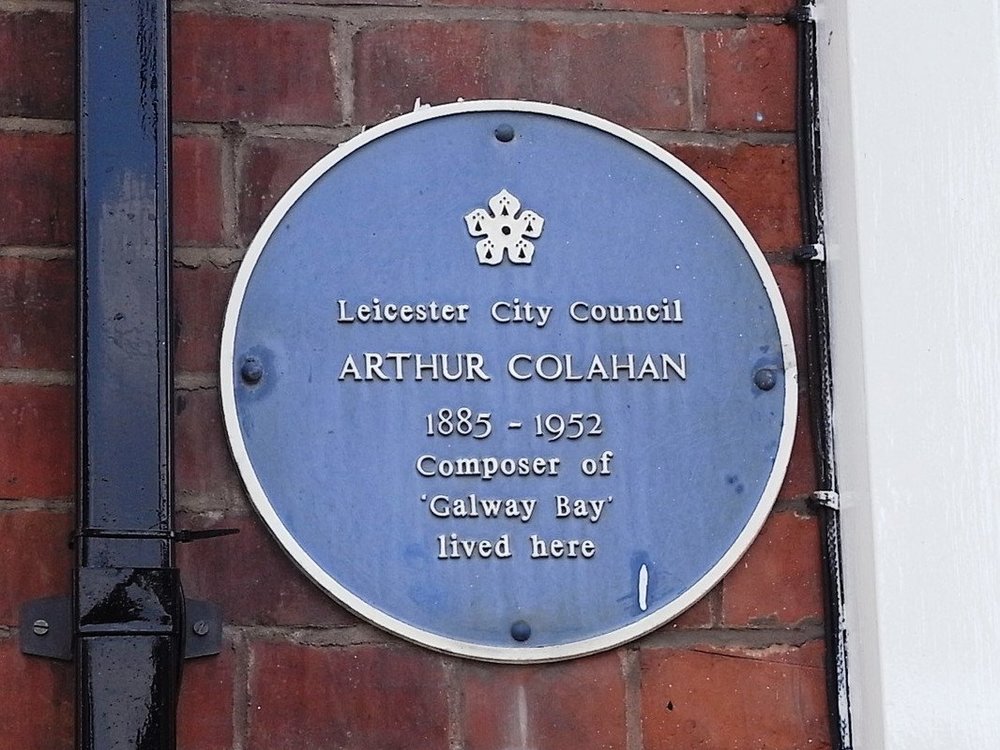
Recommended Comments
Join the conversation
You can post now and register later. If you have an account, sign in now to post with your account.
Note: Your post will require moderator approval before it will be visible.